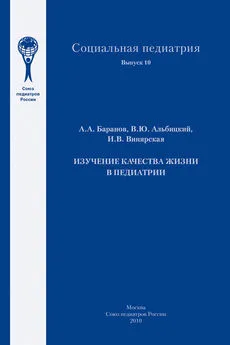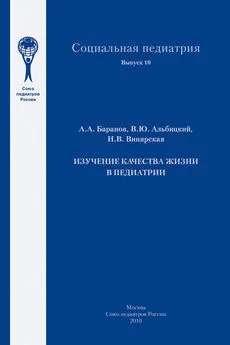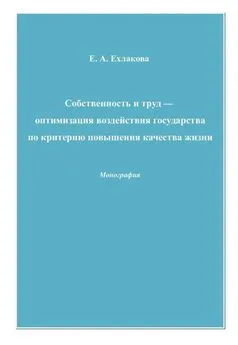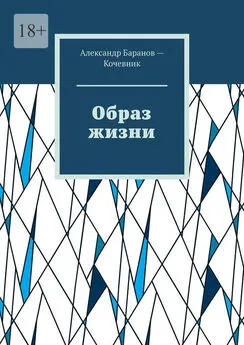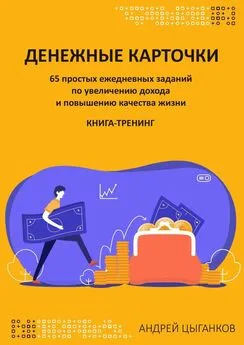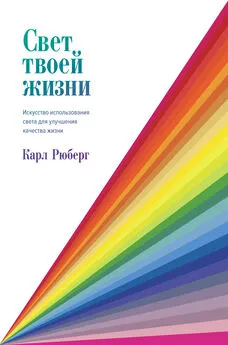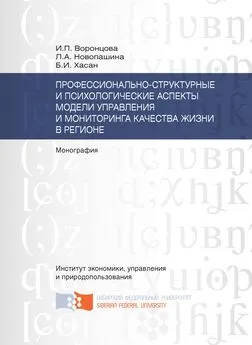Александр Баранов - Изучение качества жизни в педиатрии
- Название:Изучение качества жизни в педиатрии
- Автор:
- Жанр:
- Издательство:Array Литагент ПедиатрЪ
- Год:2010
- Город:Москва
- ISBN:978-5-904753-05-4
- Рейтинг:
- Избранное:Добавить в избранное
-
Отзывы:
-
Ваша оценка:
Александр Баранов - Изучение качества жизни в педиатрии краткое содержание
Книга предназначена ученым, решившим изучать качество жизни детей, организаторам здравоохранения и практическим педиатрам.
Изучение качества жизни в педиатрии - читать онлайн бесплатно полную версию (весь текст целиком)
Интервал:
Закладка:
98. Станчева Н. В., Семенова Е. В., Овсянникова М. А. и др. Оценка качества жизни и симптомов у детей, больных гемобластозами, в отдаленном периоде после аллогенной трансплантации костного мозга (ТКМ)/стволовых кроветворных клеток (ТСКК) // Вестник Межнационального центра исследования качества жизни. – 2007. – № 9-10.-С. 53–68.
99. Суховская О. А. Качество жизни, связанное со здоровьем // Тюменский медицинский журнал. – 2000. – № 2. – С. 3–6.
100. Сухонос Ю. А. Особенности популяционного исследования качества жизни: Автореф. дне… канд. мед. наук. – С.-Пб., 2003. – 24 с.
101. Татькова А. Ю. Оценка качества жизни и состояния здоровья подростков с помощью TACQOL: Автореф. дне…. канд. мед. наук. – М., 2003. – 24 с.
102. Тимофеева А. Г., Винярская И. В. Исследование качества жизни у детей с хроническими заболеваниями // Вопросы современной педиатрии. – 2008. – Т. 7, № 6. – С. 28–29.
103. Тодоров А. С. Качество жизни. – М., 1980. – 152 с.
104. Флетчер R, Флетчер С., Вагнер Э. Клиническая эпидемиология. Основы доказательной медицины. – М.: Медиа Сфера, 1998. – 345 с.
105. Черкасова Е. М. Качество жизни подростков, живущих вне дома // Бюллетень Национального научно-исследовательского института общественного здоровья. – 2005. – № 3. – С. 137–139.
106. Черюканов А. В., Пинаева Е. К., Петров О. С. и др. Влияние объема медицинской реабилитации на динамику качества жизни несовершеннолетних с ограниченными возможностями // Вестник Межнационального центра исследования качества жизни. – 2007. – № 9-10.-С. 74–88.
107. Шпирна А. И., Веселова И. М. К вопросу качества жизни: современный взгляд // Бюллетень НИИ социальной гигиены, экономики и управления здравоохранением им. И. А. Семашко. – 2000. – Тематический выпуск. – С. 236–239.
108. Эфендиева К. Е. Влияние различных методов лечения на качество жизни детей, страдающих бронхиальной астмой: Автореф. дис…. канд. мед. наук. – М., 2005. – 27 с.
109. Alexeyeva E. I., Denisova R. V., Albitsky V. Y. et al. The quality of life of children, ages 2 to 4, treated with infliximab with juvenile idiopathic arthritis // Annual European Congress of Rheumatology EULAR 2008. – Paris, 2008. – P. 267.
110. Alexeyeva E.I., Denisova R.V., Albitsky V. Y. et al. The quality of life factor in children with juvenile idiopathic arthritis, ages 2 to 4 // Annual European Congress of Rheumatology EULAR
2008.-Paris, 2008.-P.641.
111. Austin J., Smith M., Risinger M. et al. Childhood epilepsy and asthma: comparison of quality of life // Epilepsia. – 1994. – V. 35, № 3. – P. 608–615.
112. Axelsson L., Andersson I., Hakansson A. et al. Work ethics and general work attitudes in adolescents are related to quality of life, sense of coherence and subjective health – a Swedish questionnaire study // BMC. Public Health. – 2005. – V. 7, № 5. – P. 103.
113. Aziah M., Rosnah T, Mardziah A. et al. Childhood atopic dermatits: A measurement of quality of life and family impact // Med.J. Malaysia. – 2002. – V. 57, № 3. – P. 329–339.
114. Baars R. M., Atherton С. I., Koopman H.M. et al. The European DISABKIDS project: development of seven condition-specific modules to measure health related quality of life in children and adolescents // Health Qual. Life Outcomes. – 2005. – V. 13, № 3. – P. 70.
115. Bannink E. M., van Pareren Y. K., Theunissen N. C. et al. Quality of life in adolescents born small for gestational age: does growth hormone make a difference? // Horm. Res. – 2005. – V. 64, № 4. – P. 166–174.
116. Beattie P. E., Lewis-Jones M.S. A comparative study of impairment of quality of life in children with skin disease and children with other chronic childhood diseases // Br.J. Dermatol. – 2006. – V. 155, № 1. – P. 145–151.
117. Bisegger C., Cloetta B., von Rueden U. Health-related quality of life: gender differences in childhood and adolescence // Soz. Praventivmed. – 2005. – V. 50, № 5. – P. 281–291.
118. Bremond-Gignac D., Tixier J., Missotten T. et al. Evaluation of the quality of life in ophthalmology // Presse. Med. – 2002. – V. 19, № 31. – P. 1607–1612.
119. Bruil J., Maes S., Le Coq L. et al. The development of the How Are You? (HAY), a quality of life questionnaire for children with a chronic illness // Quality of Life News Letter. – 1998. – V. 3. – P. 9.
120. Brunner H. I., Taylor J., Britto M. T. et al. Differences in disease outcomes between medicaid and privately insured children: possible health disparities in juvenile rheumatoid arthritis //Arthritis Rheum. – 2006. – V. 55, № 3. – P. 378–384.
121. Bullinger M., Ravens-Sieberer U. Health related quality of life assessment in children // Eur. Rev. Appl. Psy. – 1995. – V. 189. – P. 245–254.
122. Bullinger M., Ravens-Sieberer U. Assessing health-related quality of life in chronically ill children with the German KINDL: first psychometric and content analytical results // Qual. Life Res. – 1998. – V. 7, № 5. – P. 399–407.
123. Bullinger M., Ravens-Sieberer U. Quality of life and chronic conditions: the perspective of children and adolescents in rehabilitation // Prax. Kinderpsychol. Kinderpsychiatr. – 2006. – V. 55, № 1. – P. 23–35.
124. Butz A., Pham L., Lewis L. et al. Rural children with asthma: impact of a parent and child asthma education program //J. Asthma. – 2005. – V. 42, № 10.-P.813–821.
125. Celia D. L, Tulsky D. S. Quality of life in cancer. Definition, purpose and method of measurement // Cancer Investigation. – 1993. – V. 11. – P. 327–336.
126. Chamlin S. L., Celia D., Lrieden I.J. et al. Development of the Childhood Atopic Dermatitis Impact Scale: initial validation of a quality-of-life measure for young children with atopic dermatitis and their families //J. Invest. Dermatol. – 2005. – V. 125, № 6. – P. 1106–1111.
127. Collier J., MacKinlay D., Phillips D. Norm values for the Generic Children's Quality of Life Measure (GCQ) from a large school-based sample // Qual Life Res. – 2000. – V. 9, № 6. – P. 617–623.
128. Cox C. L., Lensing S., Rai S.N. et al. Proxy assessment of quality of life in pediatric clinical trials: application of the Health Utilities Index 3 // Qual. Life Res. – 2005. – V. 14, № 4. – P. 1045–1056.
129. Cremeens J., Eiser C., Blades M. Lactors influencing agreement between child self-report and parent proxy-reports on the Pediatric Quality of Life Inventory 4.0 (PedsQL) generic core scales // Health Qual. Life Outcomes. – 2006. – V. 30, № 4. – P. 58.
130. Cronbach L.J. Coefficient alpha and the internal structure of tests // Psychometrica. – 1951. – V. 16, № 3. – P. 297–334.
131. Daley A. J., Copeland R. J., Wright N. R et al. Protocol for: Sheffield Obesity Trial (SHOT): a randomised controlled trial of exercise therapy and mental health outcomes in obese adolescents // BMC Public Health. – 2005. – V. 31, № 5. – P.113.
132. Da Mota Falcao D., Ciconelli R. M., Ferraz M. B. Translation and cultural adaptation of quality of life questionnaires: an evaluation of methodology //J. Rheum. – 2003. – V. 30, № 2. – P. 379–385.
133. Davis E., Waters E., Mackinnon A. et al. Paediatric quality of life instruments: a review of the impact of the conceptual framework on outcomes // Dev. Med. Child Neurol. – 2006. – V. 48, № 4. – P. 311–318.
134. De Civita M., Regier D., Alamgir A. H. et al. Evaluating health-related quality-of-life studies in paediatric populations: some conceptual, methodological and developmental considerations and recent applications // Pharmacoeconomics. – 2005. – V. 23, № 7. – P. 659–685.
135. Degliute R., Pranckevicius S. Pediatric disability of the upper extremity and quality of life questionnaire: reliability, validity, and sensitivity to change // Medicina (Kaunas). – 2006. -V. 42, № 8. – P. 635–642.
136. Dubo R. Mirage of Health. – N. Y., Harper and Row, 1959.
137. Eiser C., Morse R. Can parents rate their child’s health-related quality of life? Results of a systematic review // Qual. Life Res. – 2001. – V. 70, № 4. – P. 347–357.
138. Eiser C., Morse R. The measurement of quality of life in children: past and future perspectives //J. Dev. Behav. Periatr. – 2001. – V. 22, № 4. – P. 248–256.
139. Eiser C., Vance Y. H., Horne B. et al. The value of the PedsQL™ in assessing quality of life in survivors of childhood cancer // Child: Care, Health and Development. – 2003. – V. 29. – P. 95–102.
140. Eland J. M., Anderson J. A. The experience of pain in children Pain: a sourcebook for nurses and other health professionals. – Boston: Little, Brown, 1997. – P. 453–473.
141. Engel G. E. The clinical application of the biopsychosocial model // Am.J. Psychiatry. – 1980. – V. 137. – P. 535–543.
142. Escobar R., Soutullo C. A., Hervas A. et al. Worse quality of life for children with newly diagnosed attention-deficit/hyperactivity disorder, compared with asthmatic and healthy children // Pediatrics. – 2005. – V. 116, № 3. – P. 364–369.
143. Fadrowski J., Cole S. R., Hwang W. et al. Changes in physical and psychosocial functioning among adolescents with chronic kidney disease // Pediatr. Nephrol. – 2006. – V. 21, № 3. – P. 394–399.
144. Fairclough D. Method of analysis for longitudinal studies of health-related quality of life // Quality of Life Assessment in Clinical Trials. – Oxford University Press: Oxford, NewYork, Tokyo, 1998. – P. 227–247.
145. Feeny D. Evaluation of HRQOL in special population: children // Qual. Life Res. – 2000. – V. 9, № 3. – P. 246.
146. Fekkes M., Theunissen N., Brugman E. et al. Development and psychometric evaluation of the TAPQOL: a health-related quality of life instrument for 1-5-year-old children //Qual. Life Res. – 2000. – V. 9, № 8. – P. 961–972.
147. Felder-Puig R., Frey E., Sonnleither G. et al. German cross-cultural adaptation of the Health Utilities Index and its application to a sample of childhood cancer survivors // Europ.J. Pediat. – 2000. – V. 159, № 4. – P. 283–288.
148. Felder-Puig R., Frey E., Proksch K. et al. Validation of the German version of the Pediatric Quality of Life Inventory™ (PedsQL™) in childhood cancer patients off treatment and children with epilepsy // Qual. Life Res. – 2004. – V. 13. – P. 223–234.
Читать дальшеИнтервал:
Закладка:
